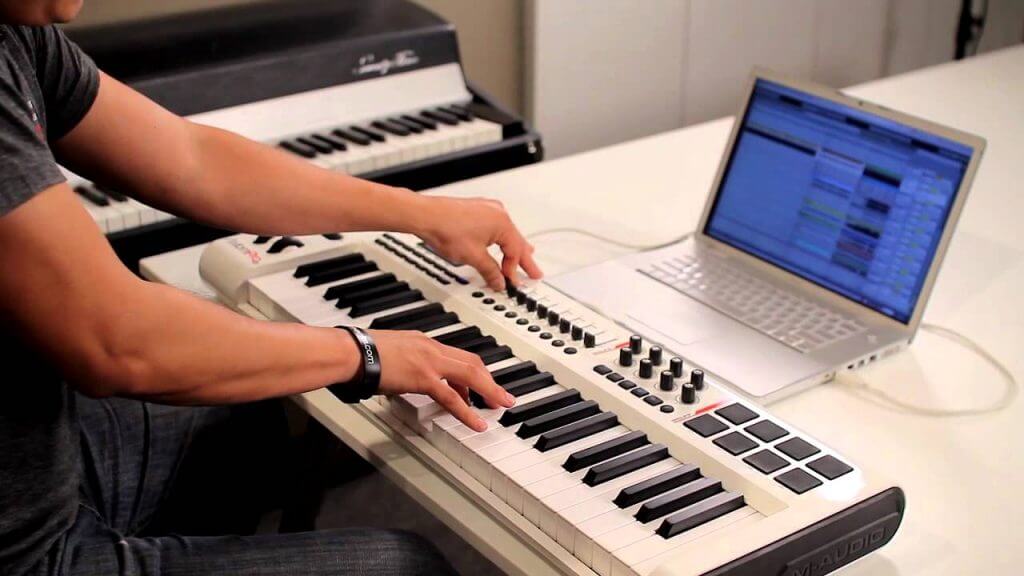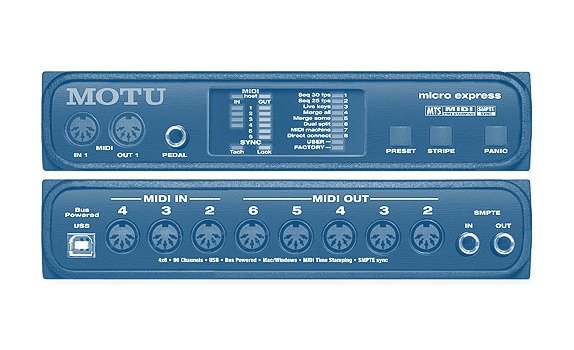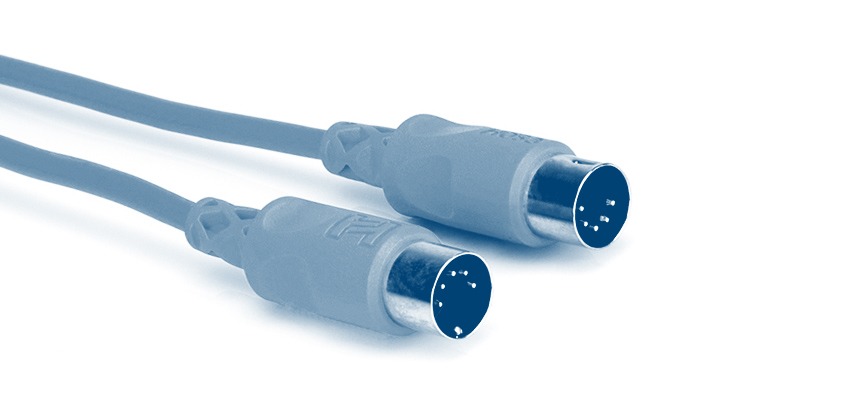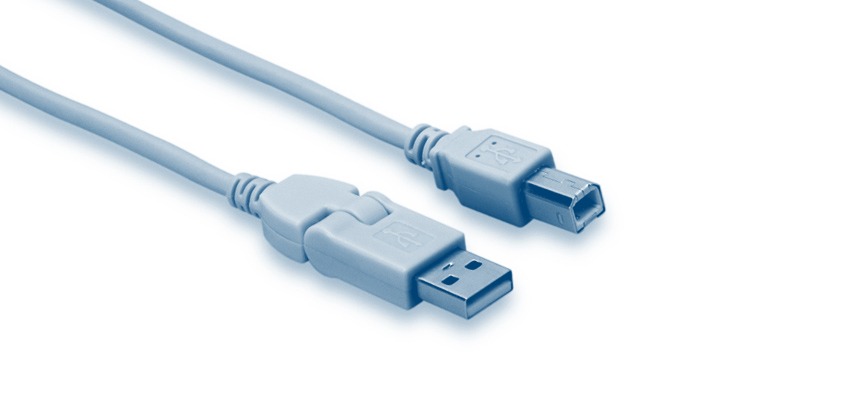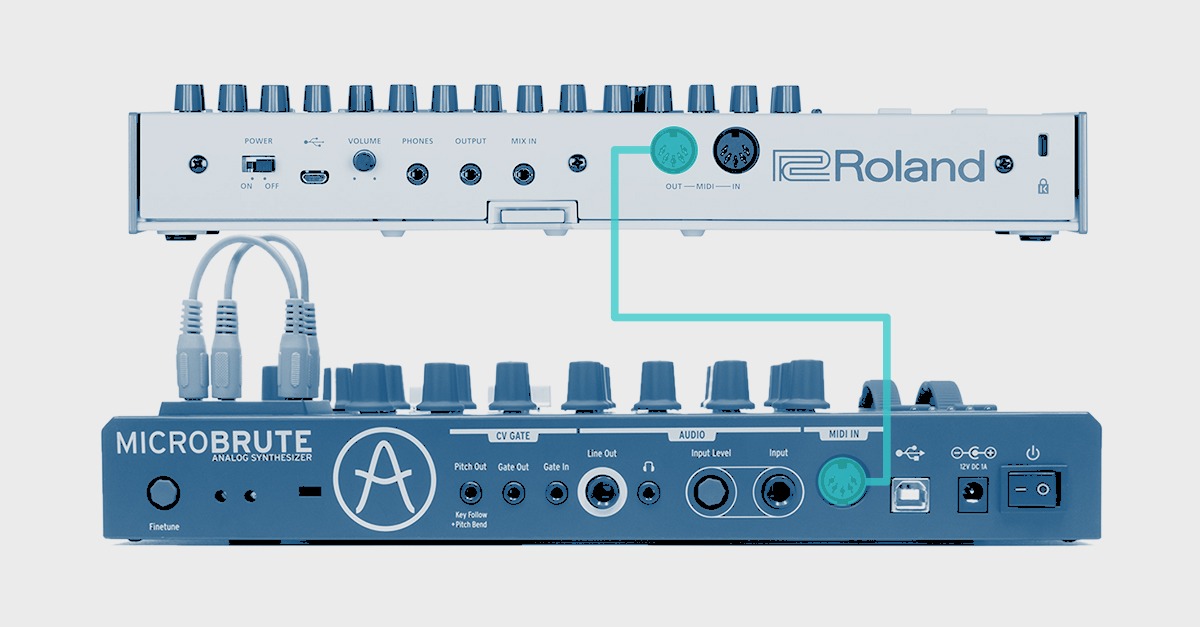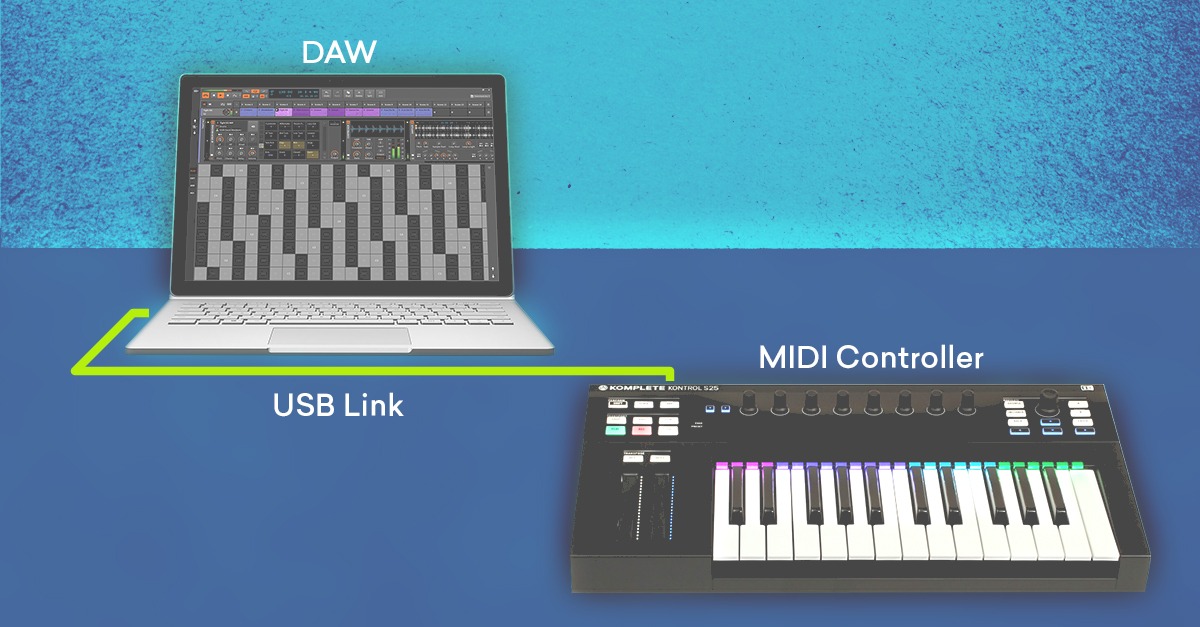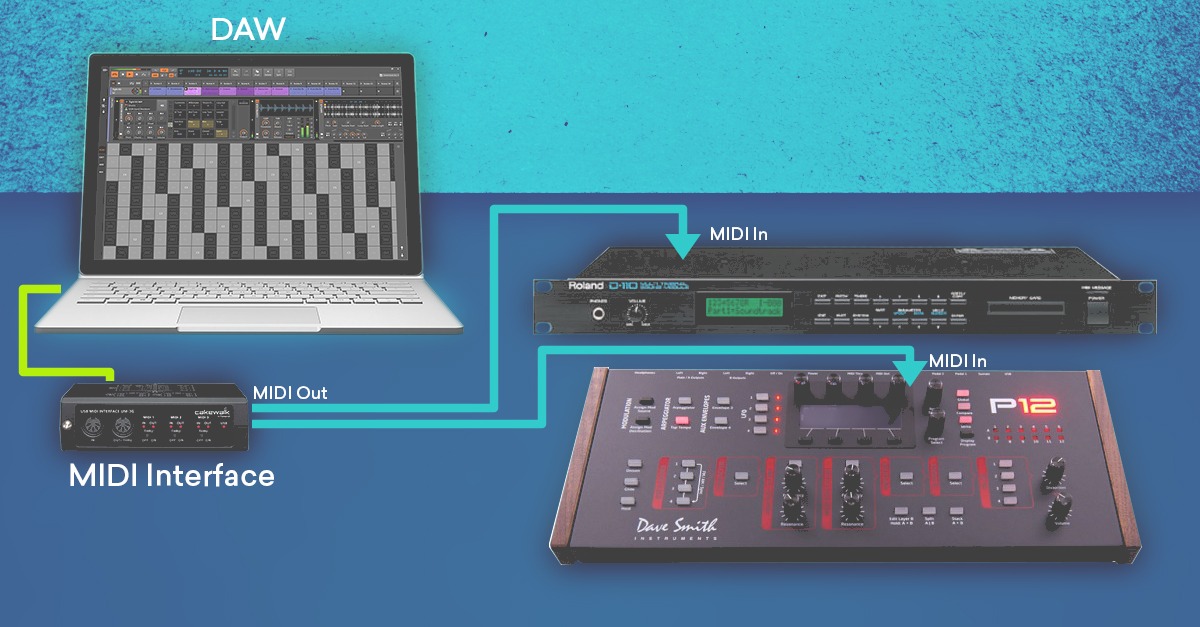Continue with some other things about Musical Instrument Digital Interface…
MIDI interfaces and controllers
Musical Instrument Digital Interface interfaces are devices that allow you to send MIDI info in and out of your computer over USB.
They are good for working with external MIDI gear like hardware synths and drum machines. Some even have multiple pairs of MIDI I/O to accommodate every possible device in your studio.
MIDI controllers are a particular kind of MIDI interface with an enter device built-in. Typical input ways available on MIDI controllers are piano keys and stress delicate pads, however, most embrace knobs and sliders for controlling other parameters as well.
MIDI cables
MIDI requires particular cables to attach together with your digital music gear. You might have seen these humorous, circular cables with an odd number of pins before.
They are known as 5-pin DIN cables and they are for connecting the inputs, outputs, and outputs on traditional MIDI gear.
Some extra compact gear uses MIDI over ¼” or ⅛” balanced TRS cable. In this situation, you might have to use particular cables or converter boxes to interface with devices utilizing the 5-pin connector.
MIDI interfaces (and some forward-looking MIDI synths) often connect to the computer utilizing USB.
MIDI IN, MIDI OUT, and MIDI THRU
Information flows in one direction per Musical Instrument Digital Interface connection. That is why you will see up to 3 MIDI ports on the back of most MIDI-outfitted gear.
The most common configuration is 3 ports with one MIDI IN, one MIDI OUT and one MIDI THRU.
The correct method to connect them could be a bit confusing relying on the situation. To get it right you have to follow the direction of your signal flow.
MIDI thru is for sending the same MIDI info to multiple devices. Bear in mind—you could set each system to a special channel and use a single stream of MIDI to control all of them.
MIDI THRU is how you make that connection. Simply connect the MIDI Thru of the first tool to the MIDI IN of the next device in the chain to duplicate the MIDI data and send it downstream.
The three most common MIDI setups
There are as many ways to use MIDI as there are musicians. However, there are some typical MIDI workflows that most producers need to understand.
I will go through the 3 most common methods to work with MIDI.
1. DAW and MIDI controller
The easiest and most common MIDI setup is utilizing a MIDI controller with your DAW in a home studio.
It’s an easy, portable and powerful method to use MIDI.
With the help of VST plugins, this setup turns your MIDI controller into whatever you want it to be: Millions of different synths, flutes, guitars, horns, drum machines or pretty much anything else you could dream up.
You could edit sequences in the piano roll and input notes manually the help of the controller to play your parts.
Plus many MIDI controllers come with knobs, pads, and sliders which are assignable as well by your DAW.
This setup is light and intuitive for composing all genres of music through MIDI.
2. Computer, MIDI interface, and synthesizers
With your MIDI interface handling conversion duties, the MIDI tracks in your DAW sequencer could control actual hardware synthesizers.
That means you could use all of your digital tools and techniques to input and edit notes and play them back with a real synthesizer—or any other MIDI capable device.
In this situation, your DAW acts as the main hub for sending and sequencing all of the MIDI info.
Utilizing the DAW Piano roll, each hardware unit could be instructed to play any sequence of notes on any MIDI channel.
3. Hardware sequencer, drum machine, and synthesizer
Not all MIDI setups have to be computer-centric.
In this instance a hardware sequencer takes the place of your DAW’s MIDI editing features.
Utilizing MIDI THRU, the sequencer sends info to 3 devices: two synths and a drum machine.
This setup is sort of a mini DAW rig made up of solely hardware gear. That is how most producers used MIDI earlier than computer systems have been low-cost sufficient to be generally utilized in music.
MIDI 2.0
MIDI is an impressively long-lasting standard. It is been at version 1.0 since the 80s!
The original architects of the protocol did a fantastic job of making a method for digital devices to communicate.
However, a lot has occurred in the world of technology since the starting of MIDI.
At this level, the standard needs to evolve to fit in with how music tech has changed around it.
For one thing, the power and speed of even the easiest modern digital gear are light years ahead of what designers were working within the 80s.
And ideas about how digital music devices need to interact have changed too.
All this has led to the development of the all new MIDI 2.0 standard. It isn’t completely out yet, however, it has the potential to greatly develop the possibilities of digital music production in the near future.
Before you grab your pitchforks, the MIDI association guarantees that the new standard could be perfectly backwards compatible with any MIDI 1.0 gear—that’s a relief!
There is no official word, however, here’s the general outline of what MIDI 2.0 will include:
- Bidirectional communication—MIDI will be a two-way street!
- Higher-resolution MIDI messages—16 and 32 bit!
- Way more MIDI channels
- Per-note pitch bend
- Web-based integration
- Reduced jitter
The details are still under wraps, however, many producers are excited about MIDI 2.0!
Master your MIDI setup
Now that you understand the power of MIDI, it’s time to integrate it into your own studio workflow.
MIDI offers you access to every sound you could think of and all of the editing energy you should make your music production fast and seamless.
Go experiment and find your favorite methods to work with MIDI.

